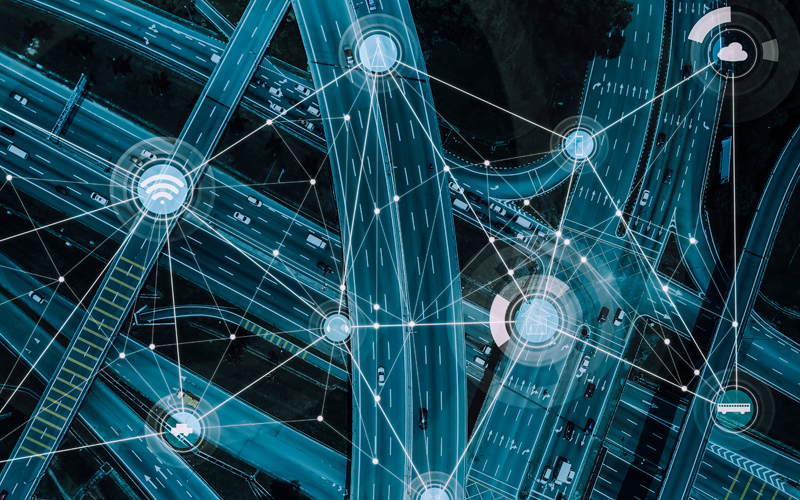Driving Change: The Benefits of Digitalisation in the UK’s Transport Sector
Thanks to advancements in digital technologies, the UK’s transportation network has undergone significant transformation in recent years. Developments in artificial intelligence (AI), machine learning, Internet of Things (IoT) and cloud computing are reshaping how the sector operates and serves commuters.
These advancements are much needed, especially if the UK is to reach net zero by 2030 and meet the demand of an ever-growing population. Research suggests that by 2041, the UK population will exceed 72 million, meaning transport’s ability to meet the needs of society will continue to be challenged.
In this blog, we examine the current digital capabilities of the UK’s transport network and discuss why adopting new technologies could enhance travel for commuters and transportation operators.
What are the current digital capabilities?
Transport networks across Great Britain have benefited significantly from adopting new technologies that enhance the travel experience for commuters and operators, but what are the current digital capabilities in place?
Online booking and ticketing systems: Whether booking a train ticket or securing a seat on a bus, online ticketing platforms offer a user-friendly interface that allows travellers to compare options, select preferred seats and pay securely.
Real-time tracking and navigation: These applications enable travellers to access up-to-the-minute information about traffic, public transport schedules and arrival times. Public transport agencies have also integrated real-time tracking into their apps, enabling improved time management.
Contactless payments and digital wallets: These technologies remove the need for physical cash or paper tickets, offering a secure and seamless payment process. For example, London’s Oyster card system enables commuters to tap and pay without the hassle of needing actual tickets.
Ridesharing and mobility apps: Apps like Uber and Lyft connect drivers, offering a flexible alternative to traditional taxis. Beyond ridesharing, mobility apps consolidate various transportation options into a single platform, encouraging the use of sustainable modes of travel.
Digital travel assistants: Virtual travel assistants powered by AI have become companions for travellers. These AI-driven platforms can provide commuters with real-time updates, weather forecasts and personalised recommendations based on their preferences.
What are the benefits of digitalisation?
As we’ve mentioned, transportation is already seeing some of the benefits digitalisation can bring. However, new technologies could enhance the performance of the UK’s transport network and support the transition to a multimodal model, which refers to integrating different modes of transport to provide a seamless and more sustainable travel experience for passengers.
For example, AI and machine learning can optimise traffic flow, predict maintenance needs and improve safety through autonomous vehicles. IoT allows for interconnected systems, enabling real-time monitoring of vehicles, infrastructure and passenger behaviour. Cloud computing offers scalable and secure storage for vast amounts of data, facilitating efficient collaboration and information sharing among stakeholders. The benefits of integrating these technologies are endless, including:
Increased operational efficiency: Digital tools streamline processes, reducing operational delays and enhancing resource allocation. AI-predicted maintenance minimises downtime and improves fleet management, ensuring vehicles or trains are available when needed.
Improved commuter journeys: Real-time updates and personalised route suggestions mean commuters will benefit from smoother, more predictable journeys. Seamless ticketing and booking systems eliminate the hassle of physical transactions, enabling a more enjoyable travel experience.
Visibility and transparency: IoT devices offer real-time insights into the location, condition and performance of vehicles or trains, enabling operators to make informed decisions and address issues promptly. This transparency extends to passengers, who can track their journeys and anticipate accurate arrival times.
Enhanced safety: AI-driven systems can analyse real-time data from vehicles and infrastructure to identify potential safety risks. Furthermore, the development of self-driving vehicles will reduce human error, a leading cause of accidents.
Sustainability: Digitalisation supports sustainable practices, such as multimodal transport, by optimising routes, reducing fuel consumption and minimising emissions. Smart traffic management systems can also alleviate congestion, leading to smoother traffic flow and reduced environmental impact.
What does the future of transport look like?
The digital revolution in the transport industry is more than a trend. It’s a shift that brings unprecedented advantages for commuters and operators. The integration of new technologies, such as AI and machine learning, is completely reshaping the sector’s landscape. However, as technology continues to evolve, we can expect further innovations that will redefine how we perceive and interact with transportation networks, leading to a more connected and sustainable future.
Through our partner Axiomtek, we offer a range of smart transportation computing solutions including embedded systems, certified transportation panel PCs and transportation monitors .
To find out more, click here.

